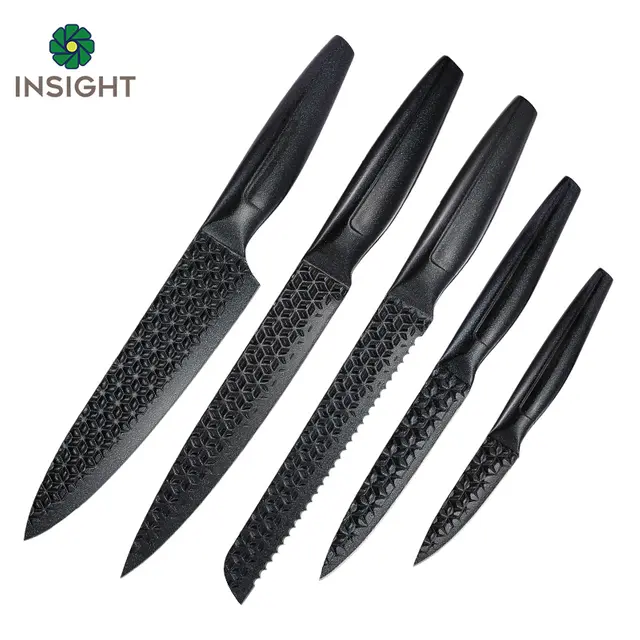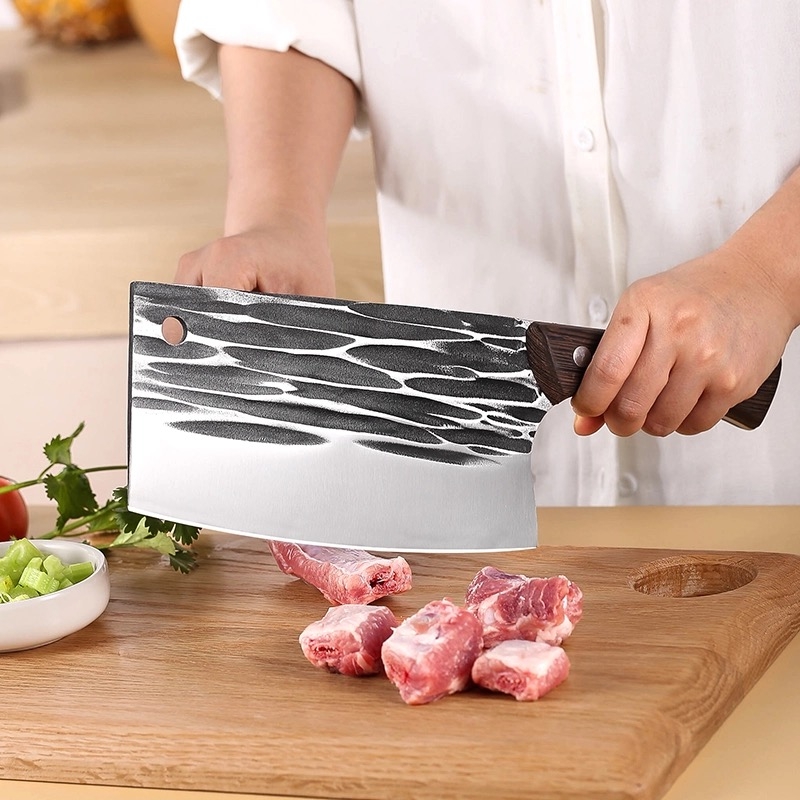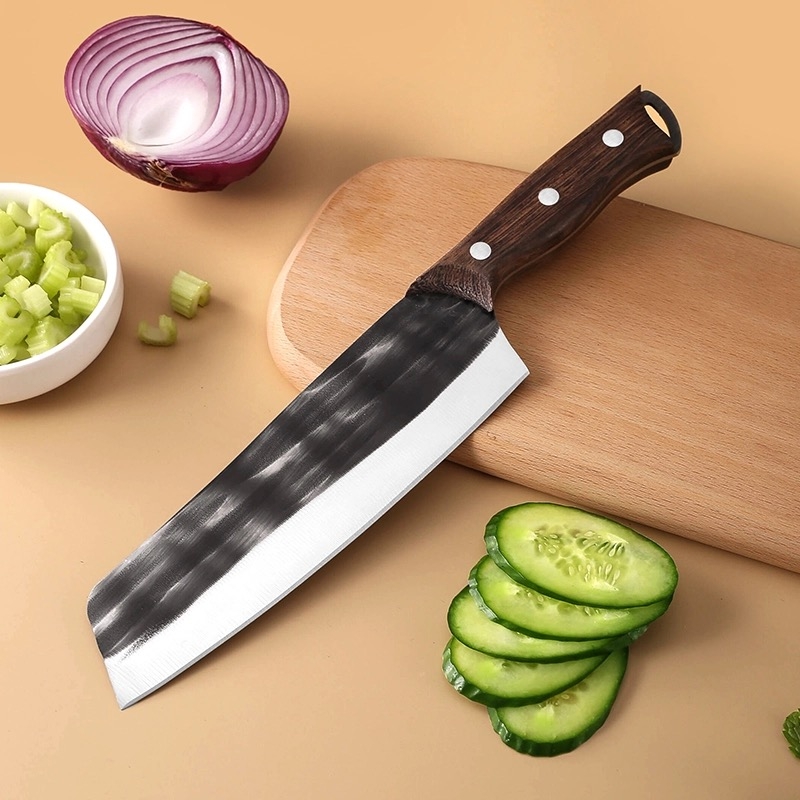Caring for your kitchen knife is essential for maintaining its performance, longevity, and safety. A well-maintained knife not only enhances your cooking experience but also ensures that you work efficiently in the kitchen. This article will explore various aspects of kitchen knife care, including cleaning, sharpening, storage, and general maintenance. By understanding the importance of each step, you can develop a routine that keeps your knives in optimal condition.
Understanding Your Kitchen Knife
Types of Kitchen Knives
Before diving into care techniques, it's important to understand the different types of kitchen knives. Each type serves a specific purpose and may require different care methods. Common types include:
Chef's Knife: A versatile knife used for chopping, slicing, and dicing. Its broad blade allows for a rocking motion, making it ideal for a variety of tasks, from mincing garlic to slicing vegetables.
Paring Knife: Ideal for peeling and intricate work. This small knife is perfect for tasks that require precision, such as deveining shrimp or removing seeds from fruits.
Bread Knife: Features a serrated edge for cutting through crusty bread. The serrations allow for a clean cut without crushing the soft interior, making it essential for bakers and sandwich lovers alike.
Utility Knife: A mid-sized knife for various tasks. This knife bridges the gap between a chef's knife and a paring knife, making it useful for slicing cheese or cutting sandwiches.
Boning Knife: Used for filleting fish and deboning meat. Its flexible blade allows for precise cuts around bones, making it a favorite among professional chefs and home cooks who enjoy working with fresh proteins.
Materials Used in Kitchen Knives
Kitchen knives are typically made from various materials, including stainless steel, carbon steel, and ceramic. Each material has its own care requirements:
Stainless Steel: Resistant to rust and corrosion but can dull over time. This material is popular for its durability and ease of maintenance, making it a common choice for both home and professional kitchens.
Carbon Steel: Holds a sharp edge well but requires more maintenance to prevent rust. While it can develop a patina that some chefs appreciate for its aesthetic, it demands regular oiling and careful drying after use.
Ceramic: Lightweight and retains sharpness but can chip easily. Ceramic knives are favored for their ability to stay sharp longer than metal knives, but they require careful handling to avoid breakage.

Cleaning Your Kitchen Knife
Hand Washing vs. Dishwasher
The first rule of knife care is to always wash your knives by hand. Dishwashers can cause damage due to high temperatures and harsh detergents. Instead, follow these steps for effective hand washing:
Use Warm Water and Soap: Rinse the knife under warm water and apply a mild dish soap. This helps to remove food particles and grease without damaging the blade.
Gentle Scrubbing: Use a soft sponge or cloth to clean the blade, avoiding abrasive materials that can scratch the surface. Pay special attention to the handle and bolster, where food particles can accumulate.
Rinse Thoroughly: Ensure all soap is removed by rinsing the knife under warm water. Residual soap can lead to a slippery surface, making the knife unsafe to handle.
Dry Immediately: Wipe the knife dry with a clean cloth to prevent moisture buildup, which can lead to rust. This step is particularly crucial for carbon steel knives, which are more prone to corrosion.
Special Considerations for Different Materials
Carbon Steel Knives: These require immediate drying after washing to prevent rust. Consider applying a thin layer of mineral oil to protect the blade. This oil creates a barrier against moisture and helps maintain the knife's appearance.
Ceramic Knives: Handle with care during cleaning, as they can chip. Use a soft cloth and avoid abrasive sponges. If the blade becomes dull, professional sharpening is recommended, as home sharpening can be challenging.
Sharpening Your Kitchen Knife
Importance of Regular Sharpening
A sharp knife is safer and more efficient. Dull knives require more force, increasing the risk of accidents. Regular sharpening helps maintain the blade's edge, ensuring that it performs well during food preparation. A sharp knife allows for cleaner cuts, which can enhance the presentation of your dishes.
Methods of Sharpening
Whetstone: This traditional method involves using a stone to grind the blade at a specific angle. It requires practice but offers excellent results. Different grits can be used for sharpening and honing, allowing for a customized approach to blade maintenance.
Honing Rod: This tool is used to realign the blade's edge between sharpenings. It's a quick way to maintain sharpness and should be part of your regular knife care routine. Honing does not remove material but instead straightens the edge, prolonging the time between sharpenings.
Electric Sharpeners: These provide convenience but can remove more material than necessary, potentially shortening the knife's lifespan. If you choose this method, select a sharpener designed for the specific type of knife you own.
How to Sharpen with a Whetstone
Soak the Whetstone: If using a water stone, soak it in water for about 10-15 minutes. This helps to create a slurry that aids in the sharpening process.
Angle the Knife: Hold the knife at a 20-degree angle against the stone. Maintaining a consistent angle is crucial for effective sharpening.
Sharpen: Push the blade across the stone in a sweeping motion, applying light pressure. Repeat on both sides until the desired sharpness is achieved. It's important to check the edge frequently to avoid over-sharpening.
Clean the Knife: After sharpening, wash and dry the knife to remove any metal filings. This step ensures that your knife is ready for use without any contaminants.

Honing Your Kitchen Knife
When to Hone
Honing should be done regularly, ideally before each use. This process helps maintain the edge without removing significant material. Regular honing can extend the time between sharpenings, making it a vital part of knife maintenance.
How to Hone
Hold the Honing Rod Vertically: Place the rod on a stable surface. Ensure that it is secure to prevent slipping during the honing process.
Angle the Knife: Position the knife at a 15-20 degree angle against the rod. This angle is crucial for effective honing.
Swipe the Blade: Gently swipe the blade down the rod, alternating sides. Repeat several times. This action realigns the edge, ensuring that your knife is ready for precise cutting.
Storing Your Kitchen Knife
Proper Storage Techniques
Storing your knives correctly is crucial to prevent damage and ensure safety. Here are some effective storage methods:
Knife Block: A wooden or plastic block keeps knives organized and protected. This method not only saves space but also prevents blades from coming into contact with each other, reducing the risk of dulling.
Magnetic Strip: This wall-mounted option saves counter space and keeps blades visible. It also allows for easy access while cooking, making it a popular choice among chefs.
Sheaths: Use blade guards or sheaths for individual knives, especially when storing in drawers. This prevents blades from dulling and protects your hands from accidental cuts.
Avoiding Common Mistakes
Drawer Storage: Avoid tossing knives into drawers without protection, as this can dull the blades and cause accidents. Instead, consider using a drawer organizer designed specifically for knives.
Stacking: Never stack knives on top of each other, as this can lead to scratches and damage. Each knife should have its own designated space to ensure its longevity.

General Maintenance Tips
Regular Inspection
Periodically inspect your knives for any signs of damage, such as chips or rust. Addressing these issues early can prevent further deterioration. Regular inspections also allow you to assess the sharpness of your knives and determine when they need sharpening or honing.
Professional Sharpening
Consider having your knives professionally sharpened once or twice a year, especially for high-quality or expensive knives. Professionals can restore the blade to its original condition, ensuring optimal performance. This service can be particularly beneficial for those who use their knives frequently or for specialized tasks.
Avoiding Common Mistakes
Using the Wrong Cutting Surface: Always use a cutting board made of wood or plastic. Avoid cutting on hard surfaces like glass or stone, which can dull the blade. A good cutting board not only protects your knife but also enhances your food preparation experience.
Using Knives for Non-Cutting Tasks: Do not use your knife for prying or opening cans, as this can damage the blade. Each knife is designed for specific tasks, and using them correctly will prolong their lifespan.
Conclusion
Proper care for your kitchen knife is essential for maintaining its performance and longevity. By following the guidelines outlined in this article, you can ensure that your knives remain sharp, safe, and effective tools in your kitchen. Regular cleaning, sharpening, and proper storage will not only enhance your cooking experience but also prolong the life of your kitchen knives. Remember, a well-cared-for knife is a chef's best friend, and investing time in its maintenance will pay off in the quality of your culinary creations.

Frequently Asked Questions regarding Kitchen Knife
1. How often should I sharpen my kitchen knife?
You should sharpen your kitchen knife every few months, depending on usage. If you use your knife daily, consider sharpening it every month. Regular honing before each use can help maintain the edge and extend the time between sharpenings.
2. Can I use a dishwasher to clean my kitchen knife?
No, it is not recommended to use a dishwasher for cleaning kitchen knives. The high temperatures and harsh detergents can damage the blade and handle. Hand washing with warm water and mild soap is the best practice.
3. What is the best way to store my kitchen knife?
The best ways to store kitchen knives include using a knife block, a magnetic strip, or blade sheaths. These methods protect the blades from damage and keep them organized and easily accessible.
4. How can I tell if my knife needs sharpening?
If you notice that your knife is struggling to cut through food, requires more force than usual, or leaves ragged edges on cuts, it likely needs sharpening. Regularly testing the sharpness by slicing through a piece of paper can also help determine if it's time to sharpen.
5. What should I do if my knife gets rust spots?
If your knife develops rust spots, gently scrub the affected area with a fine steel wool pad or a rust eraser. After removing the rust, wash and dry the knife thoroughly, and consider applying a thin layer of mineral oil to protect it from future rusting. Regular maintenance and proper storage can help prevent rust from forming.






